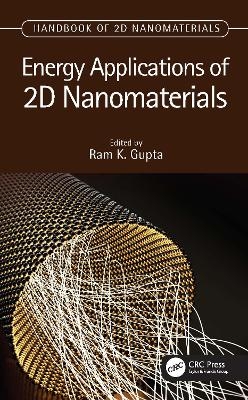
Energy Applications of 2D Nanomaterials
CRC Press (Verlag)
978-1-032-01387-9 (ISBN)
2D nanomaterials have emerged as promising candidates for use in energy devices owing to their superior electrochemical properties, surface area, nanodevice integration, multifunctionality, printability, and mechanical flexibility. Energy Applications of 2D Nanomaterials covers a wide range of applications of 2D nanomaterials for energy, as well as future applications and challenges in fabricating flexible energy generation and storage devices.
This book:
Examines 2D nanomaterials for solar cells, fuel cells, batteries, supercapacitors, and flexible devices
Details novel methods and advanced technologies
Covers future applications and challenges
This book is aimed at materials scientists, chemists, electrochemists, and engineers working in energy disciplines.
Ram K. Gupta is Associate Professor at Pittsburg State University. Dr. Gupta’s research focuses on green energy production and storage using conducting polymers and composites, electrocatalysts for fuel cells, nanomaterials, optoelectronics and photovoltaics devices, organic-inorganic hetero-junctions for sensors, nanomagnetism, bio-based polymers, bio-compatible nanofibers for tissue regeneration, scaffold and antibacterial applications, and biodegradable metallic implants. Dr. Gupta has published over 200 peer-reviewed articles, made over 275 national/international/ regional presentations, chaired many sessions at national/international meetings, wrote several book chapters, and received over $2 million for research and educational activities from external agencies. He serves as associate editor, guest editor, and editorial board member for various journals.
Part 1: 2D Nanomaterials for Solar Cells. 1. Graphene Based 2D Nanomaterials. 2. Chalcogenide Based 2D Nanomaterials.
3. Metal Oxide/Hydroxide Based 2D Nanomaterials. 4. Metal Phosphide Based 2D Nanomaterials. 5. Mxene-Based 2D Nanomaterials. Part 2: 2D Nanomaterials for Fuel Cells. 6. Graphene Based 2D Nanomaterials. 7. Chalcogenide Based 2D Nanomaterials. 8. Metal Oxide/Hydroxide Based 2D Nanomaterials. 9. Metal Phosphide Based 2D Nanomaterials. 10. Mxene-Based 2D Nanomaterials. Part 3: 2D Nanomaterials for Batteries. 11. Graphene Based 2D Nanomaterials. 12. Chalcogenide Based 2D Nanomaterials. 13. Metal Oxide/Hydroxide Based 2D Nanomaterials. 14. Metal Phosphide Based 2D Nanomaterials. 15. MXene-Based 2D Nanomaterials. Part 4: 2D Nanomaterials for Supercapacitors. 16. Graphene Based 2D Nanomaterials. 17. Chalcogenide Based 2D Nanomaterials. 18. Metal Oxide/Hydroxide Based 2D Nanomaterials. 19. Metal Phosphide Based 2D Nanomaterials. 20. Mxene-Based 2D Nanomaterials. Part 5: 2D Nanomaterials for Flexible Devices. 21. 2D Nanomaterials for Flexible Solar Cells. 22. 2D Nanomaterials for Flexible Fuel Cells. 23. 2D Nanomaterials for Flexible Batteries. 24. 2D Nanomaterials for Flexible Supercapacitors.
| Erscheinungsdatum | 20.05.2022 |
|---|---|
| Zusatzinfo | 4 Tables, black and white; 69 Line drawings, black and white; 35 Halftones, black and white; 104 Illustrations, black and white |
| Verlagsort | London |
| Sprache | englisch |
| Maße | 156 x 234 mm |
| Gewicht | 657 g |
| Themenwelt | Technik ► Elektrotechnik / Energietechnik |
| Technik ► Maschinenbau | |
| Technik ► Umwelttechnik / Biotechnologie | |
| ISBN-10 | 1-032-01387-7 / 1032013877 |
| ISBN-13 | 978-1-032-01387-9 / 9781032013879 |
| Zustand | Neuware |
| Haben Sie eine Frage zum Produkt? |
aus dem Bereich


